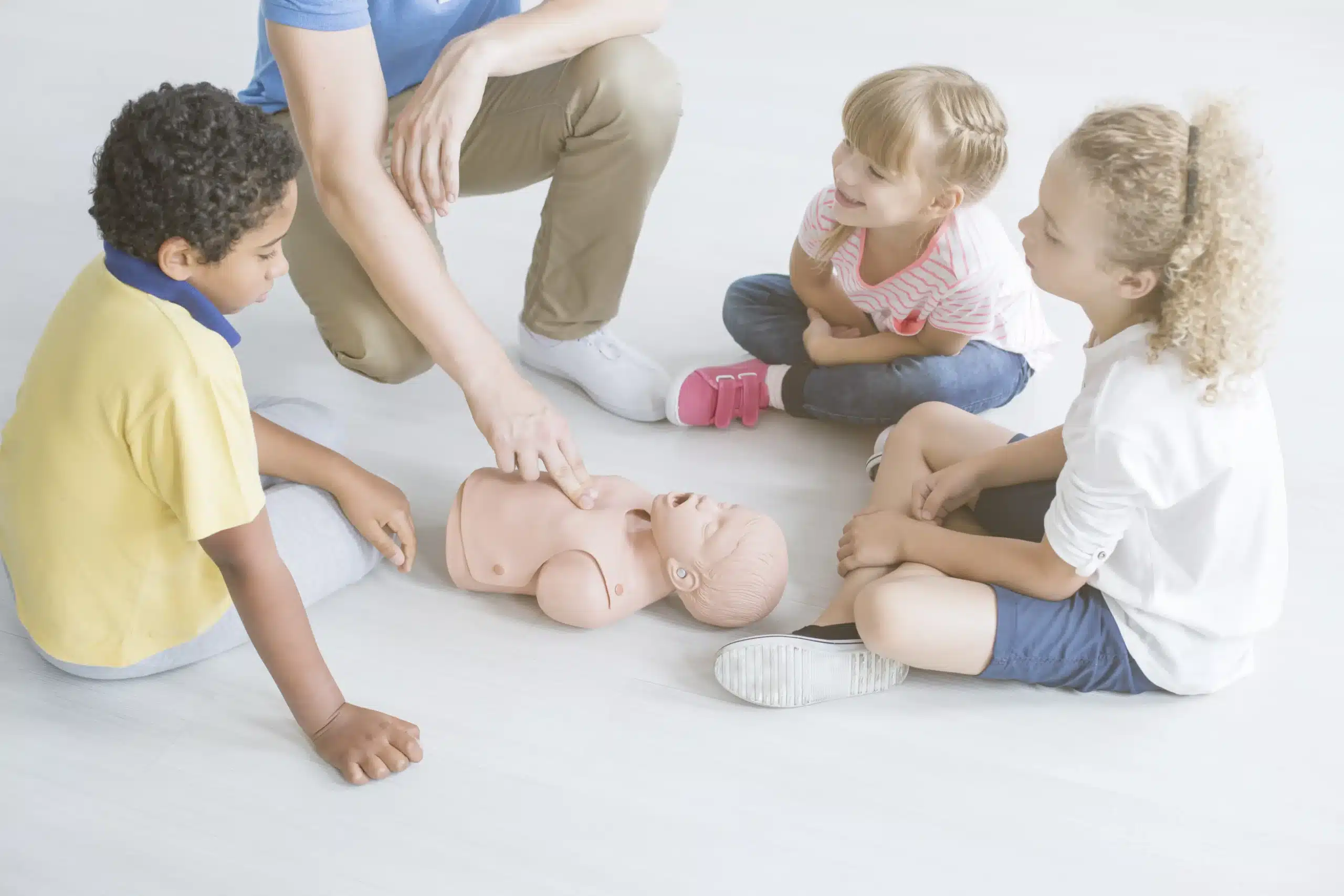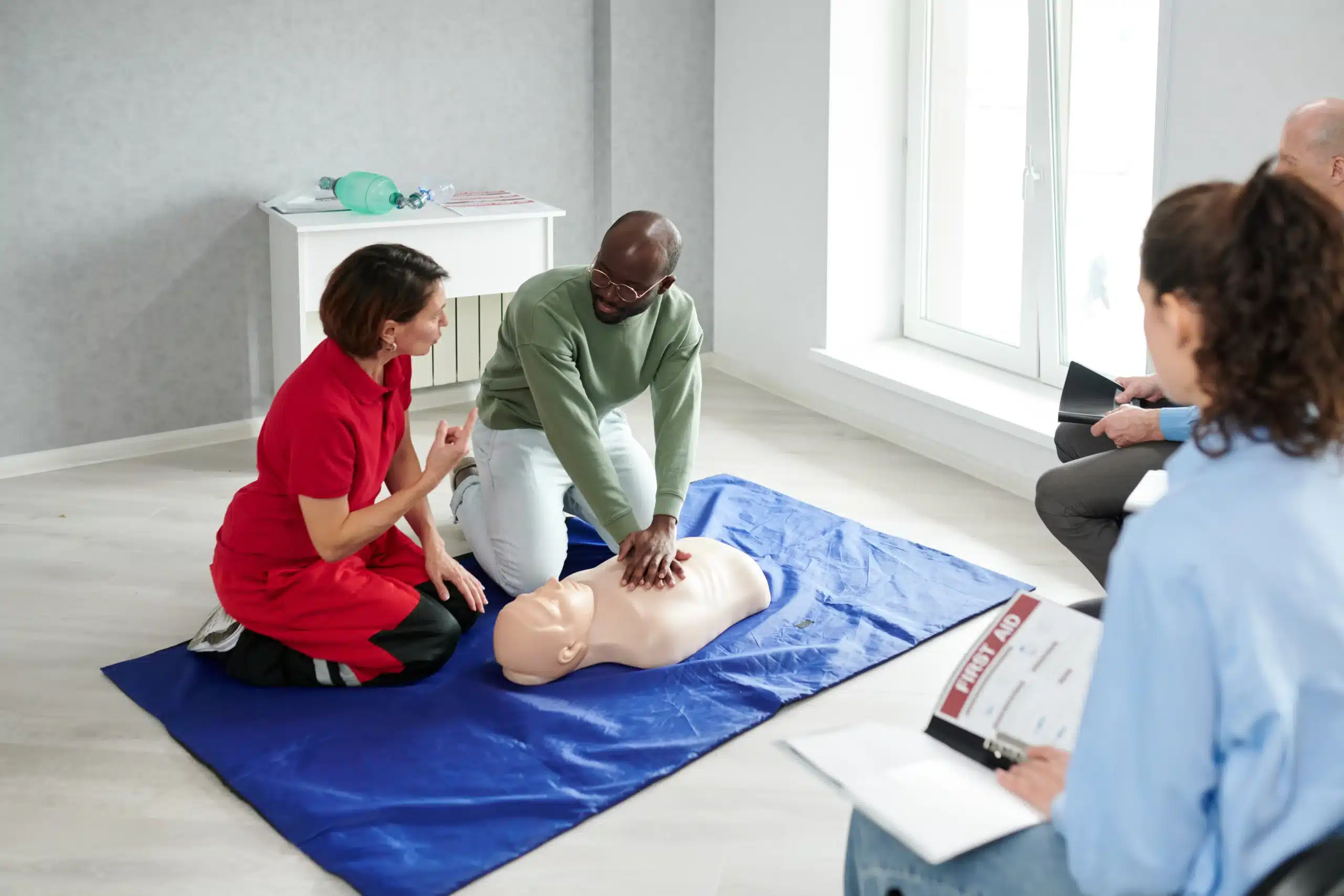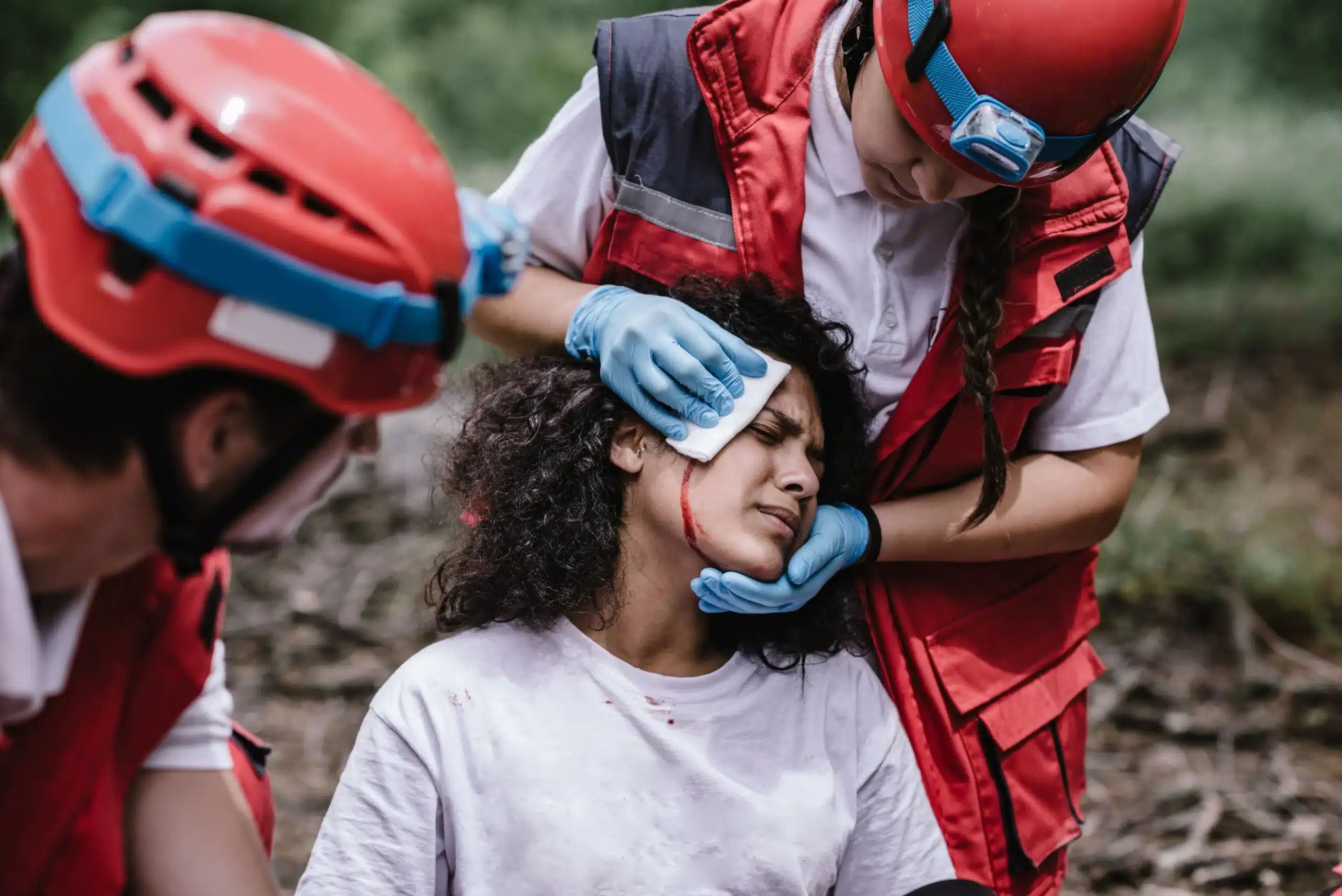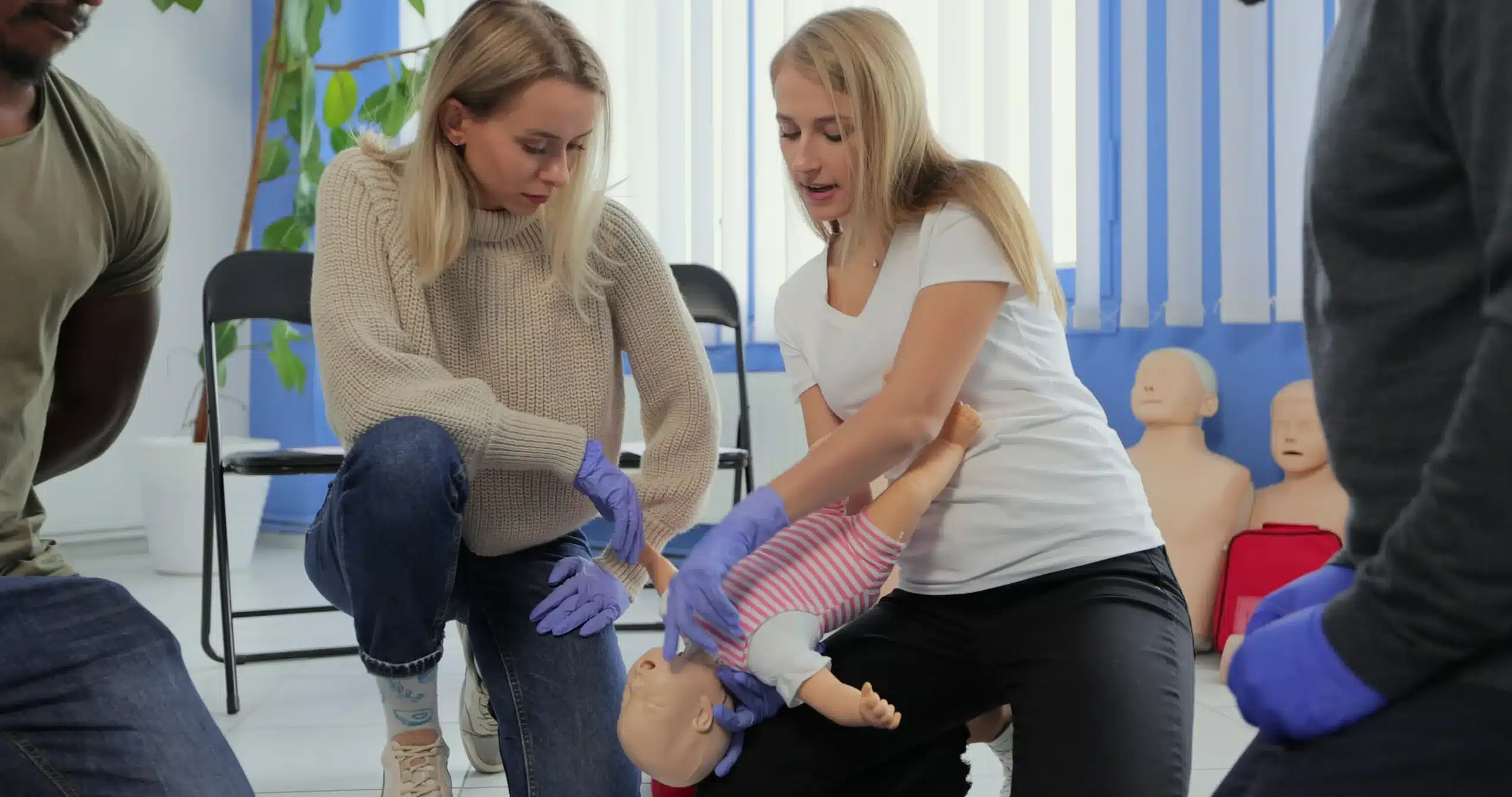Living in Livermore means enjoying a vibrant community, beautiful parks, and easy access to outdoor adventures. But it also means being prepared for the unexpected. From everyday mishaps to the occasional earthquake tremor, having a well-stocked first-aid kit is crucial for Livermore residents. This isn’t just about bandages and antiseptic wipes; it’s about having the right tools and knowledge to handle any situation, big or small. In this guide, we’ll explore everything you need to know about first-aid kits for Livermore residents, from essential supplies to where to find training and resources in our community. We’ll cover building a kit that fits your lifestyle, understanding the costs, and tailoring it to Livermore’s unique needs.
Key Takeaways
- Be prepared for the unexpected: A well-stocked first-aid kit, tailored to Livermore’s unique environment and your family’s health needs, is essential for handling emergencies effectively. Regularly check and update its contents to ensure it stays relevant to your family and local conditions.
- Knowledge empowers action: Learning how to use your first-aid kit is just as important as having one. Explore local training providers like Safety Training Seminars and online resources to gain the confidence to respond effectively in emergencies.
- Personalize your approach: Consider your individual circumstances, budget, and potential emergencies specific to Livermore when selecting a first-aid kit. Customize a pre-assembled kit with additional items relevant to your family’s health and local hazards.
What are First-Aid Kits and Why Livermore Residents Need Them?
First-aid kits are collections of supplies and equipment designed for immediate care during medical emergencies or injuries. They typically contain items like bandages, antiseptic wipes, gauze, and medical tape. A well-stocked first-aid kit is crucial for treating minor injuries and stabilizing more serious situations until professional help arrives.
For Livermore residents, having a first-aid kit is especially important because of the area’s vulnerability to natural disasters like earthquakes and wildfires. The Livermore Fire Department recommends having emergency kits at home, in your car, and at work, with at least three days of supplies—ideally enough for a week or two. Being prepared helps you stay calm and take effective action during emergencies, as highlighted by the City of Livermore. This preparedness not only benefits individuals but also makes our community more resilient. A first-aid kit ensures Livermore residents can handle emergencies effectively and safely.
Types of First-Aid Kits in Livermore
Whether you’re at home, on the road, or exploring the outdoors, having the right first-aid kit is crucial. Let’s look at the different types of first-aid kits Livermore residents might need:
Home First-Aid Kits
A home first-aid kit is your first line of defense for everyday injuries like minor cuts, burns, and scrapes. Think bandages, antiseptic wipes, pain relievers, and a CPR breathing barrier. The City of Livermore offers a helpful list of essentials to get you started. Keep this kit easily accessible, perhaps in a kitchen cabinet or bathroom drawer.
Vehicle First-Aid Kits
Accidents can happen anytime, anywhere, so a first-aid kit in your car is a must-have. In addition to the basics, consider adding items like a flashlight, emergency blanket, and a seatbelt cutter. The Livermore Fire Department recommends keeping emergency kits readily available, especially in your vehicle.
Trauma Kits
For more serious injuries, a trauma kit can be invaluable until professional medical help arrives. These kits typically include items like tourniquets, pressure dressings, and chest seals. Unitek EMT provides helpful advice on assembling a comprehensive first-aid kit that goes beyond the basics.
Outdoor Adventure Kits
Livermore has fantastic outdoor spaces, but adventures can sometimes lead to unexpected injuries. An outdoor first-aid kit should address common issues like sprains, blisters, and insect bites. Consider adding items like insect repellent, sunscreen, and a whistle to your outdoor kit. Risen Medical offers insights into specialized kits for various outdoor activities.
Build a Well-Stocked First-Aid Kit: Essential Components
A well-stocked first-aid kit is your first line of defense in minor emergencies. Knowing what to include is key to handling unexpected situations effectively. Let’s break down the essential components:
Bandages and Wound Care
Start with a variety of adhesive bandages for minor cuts and scrapes. Include various sizes, from small spot bandages to larger ones for covering bigger wounds. A compress dressing (like a 5×9 inch size) is useful for applying pressure to bleeding wounds. Don’t forget adhesive medical tape to secure bandages and dressings. Gauze pads in different sizes are essential for cleaning and covering wounds, while a roll of gauze bandage can secure dressings or provide support for sprains.
Antiseptics and Medications
Individually packaged antiseptic wipes are crucial for cleaning wounds and preventing infection. Include over-the-counter pain relievers like ibuprofen or acetaminophen. Antihistamines can help with allergic reactions, while hydrocortisone cream can soothe insect bites and rashes. Consider adding any personal prescription medications you take regularly, enough for a few days, as recommended by the Livermore Fire Department.
Medical Instruments and Tools
Small scissors are essential for cutting bandages and tape. Tweezers are useful for removing splinters or ticks. A thermometer can help assess fevers, and disposable gloves protect you while treating someone else. A CPR face shield or barrier device can be a valuable addition for administering rescue breaths safely. Don’t forget a small flashlight for checking pupils or examining wounds in low light.
Emergency Information and Instructions
Keep a list of emergency contacts, including family, doctors, and local emergency services, in a waterproof bag or container. Include any important medical information, such as allergies or medical conditions. A small first-aid manual can provide guidance in different situations. Prepare a document with instructions for any specific medical devices or procedures relevant to your family. Remember to store copies of these documents in all your emergency kits and go-bags.
Where to Buy First-Aid Kits in Livermore
Finding the right first-aid kit is easy, thanks to a variety of local and online retailers. Here are a few options to explore in Livermore:
Local Stores
CVS Pharmacy
CVS Pharmacy stores in Livermore carry a selection of pre-assembled first-aid kits suitable for various needs. It’s always a good idea to call ahead to check their current inventory or visit their website.
Walgreens
Similar to CVS, Walgreens stores in Livermore stock a range of first-aid kits. Check their website or visit your nearest Walgreens to see what they have in stock.
Walmart Supercenter
The Walmart Supercenter in Livermore offers a wider variety of first-aid kits and supplies, often at competitive prices. You can check their in-store availability on their website or shop online.
Target
Target stores in Livermore also carry first-aid kits, from basic to more comprehensive options. Visit your local Target or browse their website to compare options.
Online Retailers
American Red Cross Store
The American Red Cross Store offers a wide variety of first-aid kits tailored for homes, workplaces, cars, and travel.
Cal First Aid
Cal First Aid, a Bay Area company, provides various first-aid kits and workplace safety solutions, helping businesses meet OSHA and California safety standards. They also offer first-aid training and CPR classes.
Prepare California
Livermore-based Prepare California specializes in emergency and disaster preparedness supplies, including a selection of first-aid kits and other safety products.
Amazon
Amazon offers a vast selection of first-aid kits from various brands and at different price points, making it easy to find one that fits your needs and budget. Be sure to check reviews and compare options before you make a purchase.
First-Aid Kit Costs: How Much Should You Spend?
Putting together a first-aid kit doesn’t have to break the bank. Whether you’re on a tight budget or want a comprehensive solution, there’s a first-aid kit out there for you. Let’s explore the price ranges and what you can expect for your money.
Budget-Friendly Options (Under $25)
If you’re looking for an affordable way to get started, pre-assembled first-aid kits are a great option. These kits typically cost between $10 and $25, offering a basic selection of essential supplies like bandages, antiseptic wipes, and pain relievers. A 73-piece kit from the American Red Cross is a perfect starting point for individuals or small families needing basic wound care.
Mid-Range Kits ($25-$100)
For a more comprehensive approach, consider a mid-range first-aid kit. Usually priced between $25 and $100, these kits offer a wider range of supplies to handle more serious situations. You’ll find items like splints, cold packs, and a greater variety of bandages and medications. A mid-range kit is a smart choice for families with active lifestyles, frequent travelers, or those living in areas prone to natural disasters. Think of it as an investment in your peace of mind.
Premium and Comprehensive Kits ($100+)
If you want to be fully prepared for any medical emergency, a premium or comprehensive first-aid kit is the way to go. Ranging from $100 to $500 or more, these kits include a vast array of supplies. You’ll find advanced wound care tools, diagnostic equipment, and even emergency medications. Premium kits are ideal for remote locations, large families, or anyone who wants to be truly prepared. Consider your specific needs and location when making a decision.
Tailor Your First-Aid Kit to Livermore’s Unique Needs
A standard first-aid kit is a great starting point, but Livermore’s unique characteristics—from our climate to our favorite local activities—mean you might need to adjust its contents. Thinking through potential scenarios specific to our area and your family will help you prepare for anything.
Local Climate and Activities
Livermore experiences hot, dry summers and mild, wet winters. These conditions influence the types of emergencies you might encounter. During fire season, having N95 masks in your kit can protect your lungs from smoke. In the summer months, add extra sunscreen, insect repellent, and cooling packs to prevent heatstroke. For the rainy season, consider packing extra waterproof bandages and hand warmers. If you enjoy hiking or biking on Livermore’s many trails, include blister treatment, a whistle, and a small mirror for signaling. The Livermore Fire Department recommends having emergency kits at home, in your car, and at work, with enough supplies to last for at least three days, preferably a week or two.
Area-Specific Emergency Items
Beyond the basics, consider Livermore-specific needs. The City of Livermore suggests including items like a CPR breathing barrier in your kit. Given Livermore’s proximity to fault lines, having a wrench or pliers to shut off utilities could be crucial. A local map can also be helpful if GPS is unavailable. Pack a small flashlight with extra batteries, especially during the shorter daylight hours of winter. Don’t forget essentials like a first-aid manual and a list of emergency contacts.
Family Health Needs
Personalize your first-aid kit based on your family’s health requirements. If anyone has allergies, ensure your kit includes their epinephrine auto-injector (like an EpiPen) and antihistamines. For those with chronic conditions, pack extra medication and a copy of their prescriptions. If you have young children, include items like teething gel, a thermometer, and child-safe pain relievers. The City of Livermore offers further guidance on preparing for emergencies. Remember, preparing your kit is an ongoing process. Regularly review and update its contents to ensure it remains relevant to your family’s needs.
Keep Your First-Aid Kit Up-to-Date
A well-stocked first-aid kit is only effective if it’s ready when you need it. Regular maintenance ensures your supplies are in good working order and haven’t expired. Here’s how to keep your kit current:
Regular Inventory Checks
Life gets busy, and it’s easy to forget what’s inside your first-aid kit. Schedule regular inventory checks—every six months is a good target. Use a checklist to ensure you have all the essential components and enough of each item. Keep a list of supplies inside each of your kits, including your go-bags and car kits, so you always know what you have on hand.
Replace Expired Items
Medications, ointments, and even some bandages have expiration dates. During your inventory checks, look for anything that’s expired and replace it promptly. Check essential items like compress dressings and adhesive bandages. Keeping these items current ensures they’ll be effective when needed. The City of Livermore offers helpful guidelines for building and maintaining your emergency kits.
Seasonal Updates
Your first-aid kit needs may change depending on the time of year. In the summer, consider adding sunscreen, insect repellent, and aloe vera gel. During cold and flu season, include a thermometer, pain relievers, and cough drops. The City of Livermore’s website has additional resources on preparedness to help residents prepare for various situations. Adjusting your kit for seasonal changes ensures you’re ready for common ailments and minor injuries throughout the year.
First-Aid Training and Resources in Livermore
Knowing how to use your first-aid kit is just as important as having one. Luckily, Livermore offers a variety of first-aid and emergency preparedness training options, both in-person and online. Here are a few resources to get you started:
Local Training Providers
Safety Training Seminars
Safety Training Seminars in Livermore offers a range of first-aid courses designed for individuals and businesses. They focus on practical skills and emergency response techniques, making their training applicable to real-life situations. For more information about their first-aid training, visit their CPR and First Aid Certification page.
Cal First Aid
Cal First Aid is another excellent option for comprehensive first-aid training. They’ve been serving the Bay Area for over 15 years and provide workplace safety solutions that meet OSHA and California safety standards. Their training programs cover a wide range of topics, ensuring you’re prepared for various emergencies.
American Red Cross
The American Red Cross offers various first-aid, CPR, and AED training courses in Livermore and online. Their nationally recognized certification programs are a great way to gain essential lifesaving skills. Check their website for upcoming classes and online learning opportunities.
Online Courses and Resources
For those who prefer the flexibility of online learning, several resources are available. The City of Livermore’s website provides information on how to prepare for emergencies, including links to online training for CPR and first aid, allowing residents to learn essential skills at their own pace.
Community Workshops and Events
The City of Livermore also offers Community Emergency Response Team (CERT) training twice a year. This program equips residents with valuable skills to respond to local emergencies and support professional responders. Check their website for upcoming training dates and registration information.
Choose the Right First-Aid Kit for Your Livermore Home or Business
Picking the right first-aid kit might seem simple, but there’s more to it than grabbing the first one you see. To make sure you’re truly prepared for anything, take a little time to consider your specific needs and what kind of emergencies you might face in Livermore.
Assess Your Needs
Think about where you’ll keep your kit—at home, in the car, or at your business. The Livermore Fire Department recommends having enough supplies at home to last at least three days in an emergency, but a week or two is even better. If you’re building a kit for your workplace, consider the potential hazards specific to your industry. A construction site, for example, will have different needs than an office. Also, factor in the number of people the kit needs to cover.
Compare Features and Contents
Not all first-aid kits are created equal. Some basic kits only include bandages, antiseptic wipes, and tape. Others are far more comprehensive, with supplies to handle more serious injuries. Unitek EMT’s guide points out that essentials like compress dressings, a CPR breathing barrier, and various sizes of bandages are crucial. The City of Livermore also offers advice on building emergency kits, including first-aid supplies. Take a look at a few different kits and compare what they offer before making a decision.
Make an Informed Decision
First-aid kits range in price from around $20 for a basic home kit to several hundred dollars for a comprehensive commercial one. Go Aid Kit offers a helpful overview of first-aid kit costs. Before you start shopping, set a budget that works for you, keeping in mind that you’ll also need to restock supplies periodically. Off Grid Warehouse shares some tips on budgeting for a first-aid kit that can help you plan. Choosing the right kit involves balancing your needs, the kit’s features, and what you can comfortably spend.
Related Articles
- First-Aid in Mountain House: Essential Tips & Resources – Livermore CPR Classes
- First-Aid Classes Near Me: Your Certification Guide – Livermore CPR Classes
- CPR & First Aid Training in Dublin: A Complete Guide – Livermore CPR Classes
- First-Aid Training Classes in Livermore – Livermore CPR Classes
- Pediatric CPR & First-Aid Training in Livermore – Livermore CPR Classes
Frequently Asked Questions
What’s the difference between a home and a car first-aid kit? While both contain basic supplies, a car kit should include extras like a flashlight, emergency blanket, and tools for car-specific emergencies (seatbelt cutter, for example). Think about roadside situations and how you might need to signal for help or stay warm while waiting for assistance.
How often should I check my first-aid kit? Aim for every six months. This lets you replace expired items, restock used supplies, and ensure everything is in good working order. Set a reminder on your phone or calendar to make it a regular habit.
Where can I get first-aid training in Livermore? Several places offer training, including Safety Training Seminars, Cal First Aid, and the American Red Cross. Check online for local classes or consider an online course if that’s more convenient. Look for programs that offer hands-on practice and cover common emergencies.
What if I have specific medical needs? Customize your kit! Add items like allergy medication, extra prescriptions, or specific tools relevant to your health conditions. Keep a list of allergies and medical information inside the kit for easy access in an emergency.
How much should I expect to spend on a first-aid kit? Basic kits start around $20, while more comprehensive ones can cost over $100. Consider your needs and budget. A good mid-range kit offers a solid balance of essential supplies and value. Remember, building your own kit gradually is also an option.





